| Early Spring Date: | March 1 |
| Late Spring Date: | May 25 |
| Best Dates to See in Spring: | March 1 - April 12 |
Spring: Dark-eyed Juncos are common winter residents in the Washington metro area. They are most frequently seen at Monticello Park during the third week in March. Juncos are in the same family as the New World Sparrows, and the subspecies seen in the Washington area breeds in Canada, Alaska, New England, the Appalachian Mountains, and some northern states. One year, an injured junco was seen at Monticello through most of May, but this was unusual. The juncos usually have flown north well before then.
Fall: Dark-eyed Juncos show up at Monticello in early October. More tend to be seen toward the end of October and the beginning of November.
Where to See Them in the Park
You can see Dark-eyed Juncos in most parts of the park. They usually are on low branches or on the ground.
Physical Description
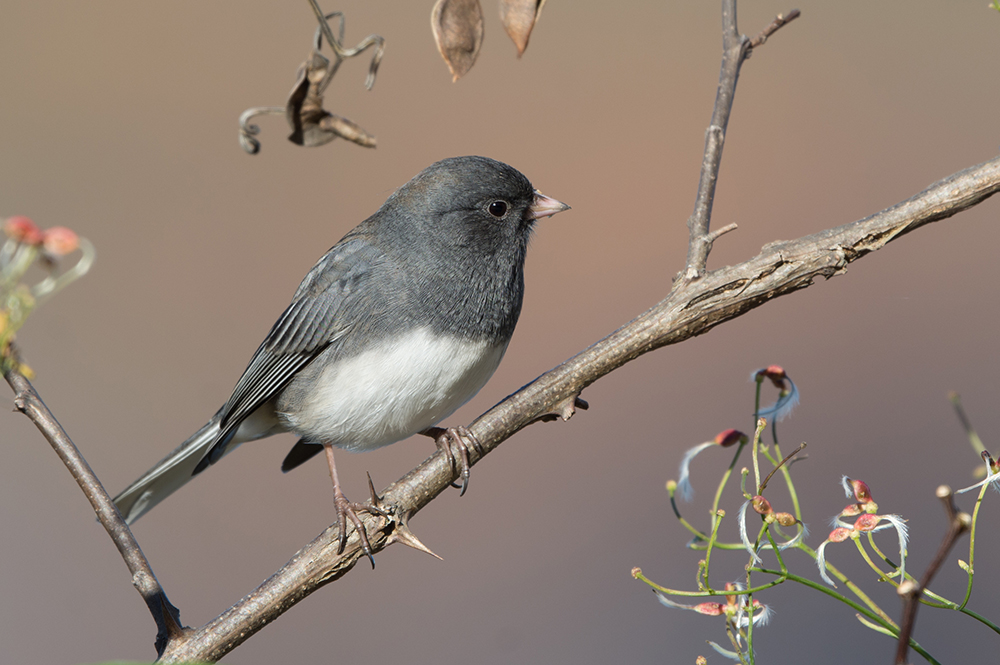
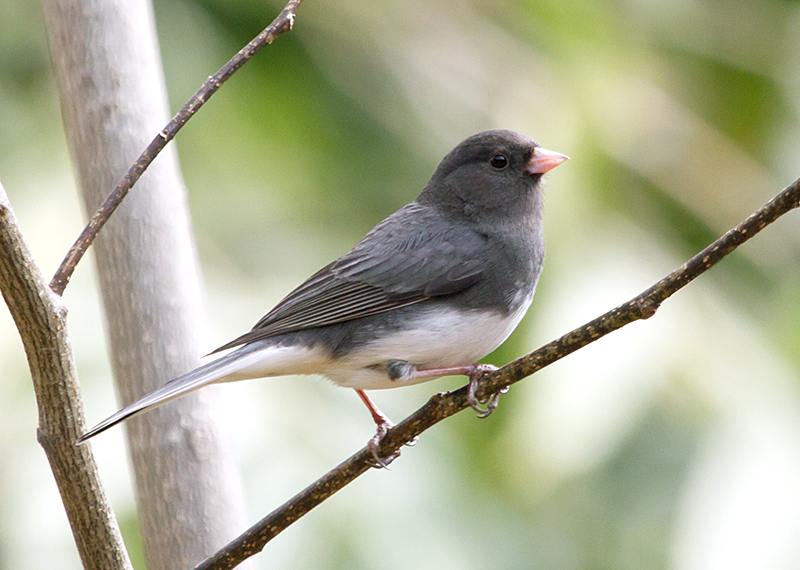
Juncos are New World sparrows. Adult male Dark-eyed Juncos are round gray birds with a pink bill, a white belly, and white outer tail feathers. They are difficult to confuse with any other species.
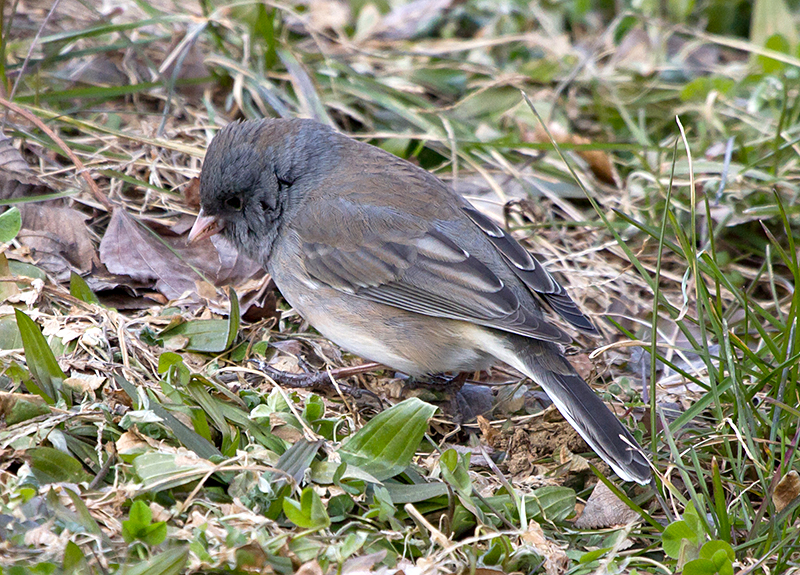
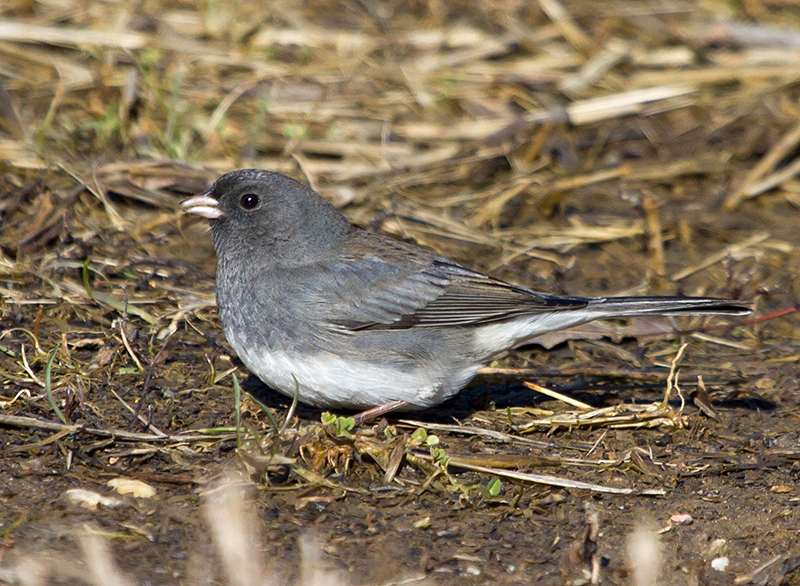
Females and immature birds have some brown plumage, as if they are using their gray plumage to cover their "inner sparrow".
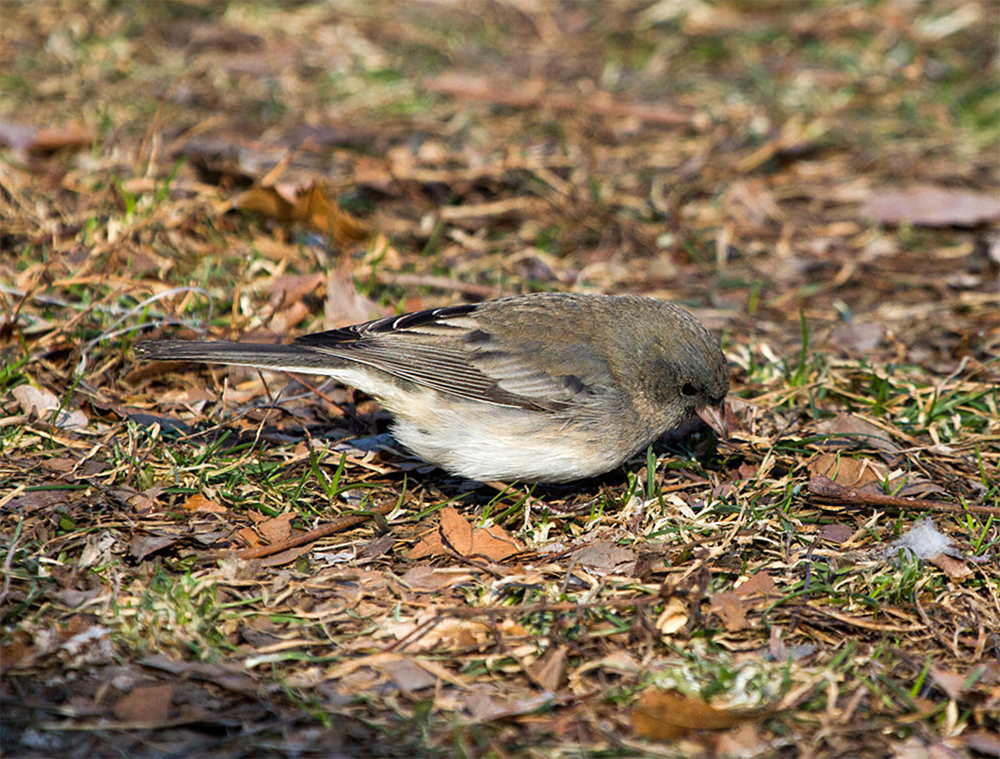
The amount of brown plumage on both females and immature birds can vary considerably, and some look very brown.
Vocalizations
The song of the Dark-eyed Junco is a sweet, fast, musical trill. Some of the trilling species, such as juncos, Chipping Sparrows, and Pine Warblers, have songs that can be confusingly similar. Sometimes when all three of these species are in the same place at the same time, sorting out the songs can be difficult.
Hear the vocalizations of the Dark-eyed Junco.Notes
Juncos are common birds near feeders; they prefer to feed on spilled seed on the ground rather than perching on a hanging feeder. They will perch on platform feeders. Juncos are widespread throughout North America, and they have five races who all look different. The subspecies at Monticello is the Slate-colored Junco. The other four are the Oregon, Pink-sided, Gray-headed, and White-winged Juncos.
Origin of Names
Common Names: Dark-eyed, to distinguish them from a junco species in Arizona with yellow eyes. Junco is Latin for reed or rush.
Genus Name: Junco is Latin for reed or rush.
Species Name: Hyemalis means winter. They were named by Carl Linnaeus based on the writings of the English naturalist Mark Catesby, who saw them only in the winter and described them as the snow sparrow.
Dark-eyed Junco video footage
Return to the Index
